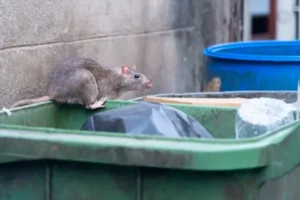
With millions of rodents spread across the U.S., effective pest control is essential for keeping your company safe. Regardless of your industry, stopping infestations before they start is the best way to stay within safety regulations and protect your reputation.
Understanding the species of rodents you might encounter, the harm they can cause, and the most effective prevention strategies are the keys to keeping your business rodent-free. Here’s what you need to know to stay ahead of the problem.
Which Rodents are the Common Culprits?
Norway rats, Roof rats, and House mice survive by feeding on humans and animals, while offering nothing in return. Their presence can result in lost inventory, harm to your business’s reputation, and even possibly closures.
As opportunistic feeders, these rodents are always on the lookout for their next meal. Whether your business is in food supply, food service, retail, hospitality, or pharmaceuticals, you must stay vigilant if you want to keep them away. Make routine inspections for rodent activity a key piece of your daily operations.
House Mice
Mice are constantly searching for food and a warm, secure place to nest. Their fur varies from light brown to dark gray, and they typically measure between 2 to 5 inches in length. Because they can squeeze through openings as small as a pencil, you need to seal even tiny gaps to keep them out.
As nocturnal pests, mice are typically active at night when you and your staff may not be able to notice them. However, telltale signs of their activity include gnawed baseboards, damaged food containers or cardboard boxes, and droppings. Mouse droppings are about a quarter inch long, pointed at both ends, and typically found in clusters.
Although mice will consume almost anything, they have a strong preference for carbohydrates such as grains, oats, rice, fruits, and seeds. They tend to build nests near food sources, settling inside walls close to kitchens, pantries, and storage areas.
Steps to keep Mice away:
- Close gaps and cracks to prevent entry, and use steel wool to cover any openings.
- Maintain a vegetation-free zone around your building, trimming trees and shrubs to prevent contact with the structure.
- Regularly clean and disinfect kitchens and food preparation areas.
- Keep food in tightly sealed containers and store them off the ground.
If you suspect a mouse infestation in your business, don’t let it go unchecked. The moment you see any signs of mice, contact us for a professional inspection.
Norway Rats
Norway rats, also called brown rats, street rats, or sewer rats, are omnivores that will consume anything they can get their paws on. Guided by their sharp sense of smell, they use scent to locate nearby food. These rodents can grow up to 11 inches long with brown or gray fur and can squeeze through openings as small as ¾ of an inch. A single female is capable of producing up to five litters per year, so they can spread extremely rapidly.
As natural burrowers, Norway rats prefer to live underground, making basements and crawl spaces ideal nesting locations if they invade your business.
These rats pose serious health risks, as they are known to carry disease-spreading pathogens that can contaminate food and inventory. Watch for warning signs such as gnaw marks, greasy trails left behind, and scurrying sounds. Their droppings are larger, pellet-shaped, and less abundant than those of mice.
Steps to keep Norway rats away:
- Fix leaks and dripping faucets to remove sources of moisture.
- Keep trash bins clean and make sure dumpsters are tightly secured.
- Cut back vegetation around the building to minimize hiding spots for rats.
- Avoid leaving food exposed, particularly overnight.
Roof Rats
Roof rats are typically only found outdoors, but their need for food and shelter can lead them inside your business. Particularly attics, roofs, and chimneys are at risk. Thanks to their skillful climbing, they can easily navigate tree branches and power lines to reach rooftops or slip through openings as small as a quarter.
Their fur varies from light to dark brown, and they are slightly smaller than Norway rats, growing up to 8 inches long. While they prefer seeds and plant-based foods, roof rats are also opportunistic eaters and will consume almost anything available. Their strong teeth enable them to gnaw through plastic, soft metals, and other materials to access food. Additionally, they are known for stashing and hoarding food supplies.
Common signs of an infestation include gnaw marks, electrical problems from chewed wires within walls and ceilings, greasy rub marks along their travel routes, and droppings approximately ½ inch long with pointed ends.
Steps to keep Roof rats away:
- Trim tree branches to prevent rats from reaching the roof and gaining access.
- Check the roof for any gaps or cracks and seal them properly.
- Maintain cleanliness in food preparation areas and store food in tightly sealed containers.
- Regularly remove trash and waste, ensuring dumpsters remain securely closed.
Who to Contact for Rodent Removal
A rodent problem can quickly escalate without professional help. Partnering with a pest control specialist like RK Environmental Services is a smart investment to protect your business. A trained technician will inspect your property, identify the rodent species, and implement effective solutions for both removal and long-term prevention.
While there are many indicators of a rodent infestation, the clearest sign is spotting a live or dead rodent. If you notice a mouse or rat near your business, act fast—contact a pest control expert immediately.
Have you observed any of these warning signs? Reach out today to schedule a service through our contact page.






